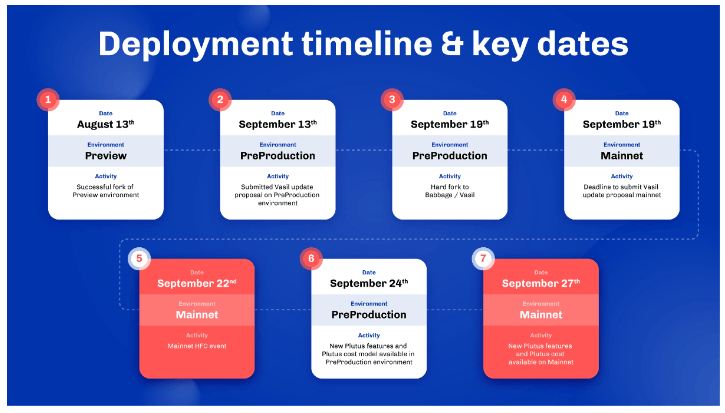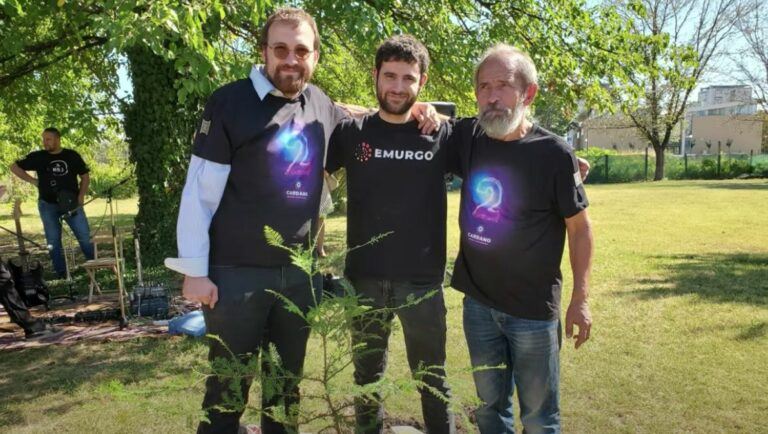On Thursday (September 22), IOG, Cardano Foundation, Cardano ecosystem community, and all $ADA HODLers celebrated a successful Vasil hard fork on the Cardano mainnet.
On 10 December 2021, IOG Co-Founder and CEO Charles Hoskinson explained that he was going to honour his Bulgarian friend and Cardano ambassador Vasil Stoyanov Davov — who sadly passed away in his apartment in Plovdiv, Bulgaria on 3 December 2021 after a lengthy battle with pulmonary embolism” — by naming the next hard fork after him. Vasil was an artist, entrepreneur, blockchain consultant, Haskell practioneer, and ginkgologist. Furthermore, it would not be an exaggeration to say that he was a highly beloved and respected member of the Cardano community.
Last Friday (September 16), Tim Harison, VP of Community & Ecosystem at Input Output Global (“IOG”), the blockchain technology company behind Cardano’s R&D, published a blog post in which he talked about what we should expect from Cardano’s Vasil upgrade.
Harrison started by saying that the Vasil upgrade would “significantly improves and enhances Cardano’s capabilities,” with “new Plutus v2 features and enhancements” allowing “DApp developers to create novel and exciting experiences” and diffusion pipelining enabling “greater throughput and network capacity.”
He then noted that “the new capabilities (including node and CLI support for reference inputs, inline datums, reference scripts, and collateral outputs), along with a new Plutus cost model” would become available on the mainnet one epoch (i.e. five days) after the Vasil HFC event; in other words, on September 27.
According to Harrison, these are the main enhancements to Plutus:
- Reference inputs (CIP-31). “This upgrade enables data sharing on-chain.”
- Inline datums (CIP-32). “Transaction datums were previously attached to outputs as hashes… This simplifies how datums are used – a user can see the actual datum rather than supply it to match the given hash.“
- Reference scripts (CIP-33). “This significantly reduces transaction size, improves throughput, and reduces script execution costs (since the script only needs to be paid for once).
- Datums and redeemers. This allows developers to “see redeemers for all inputs rather than just the one being passed to the currently executing script.“
- Data Serialisation primitive. This “reduces the overall memory and CPU costs allowing for more optimized and generic ways of data serialization.“
As for diffusion pipelining, Harrison says that this will “improve scalability by enabling further performance improvements,” and that we can expect “a ‘spike’ in activity immediately following the upgrade – as the community test drives the capabilities.”
Finally, as for what lies ahead for Cardano in the next week or so, he presented the following deployment timeline:

At 9:44:00 p.m. UTC on September 22, the Cardano mainnet was successfully hard forked via the Vasil hard fork combinator (HFC) event:
As for the rest of the Cardano community, several stake pool operators (SPOs) have been working hard testing Vasil in production, but so far the Vasil-enhanced Cardano network appears to be bullet-proof:
And here are a few tweets about the Vasil upgrade celebrations:
Developer and former SPO Adam Dean tweeted abut the health of the Cardano blockchain following the Vaisl upgrade:
According to data by CryptoCompare, $ADA is currently (as of 8:40 a.m. UTC on September 3) trading around $0.4581, up 1.24% in the past 24-hour period.









